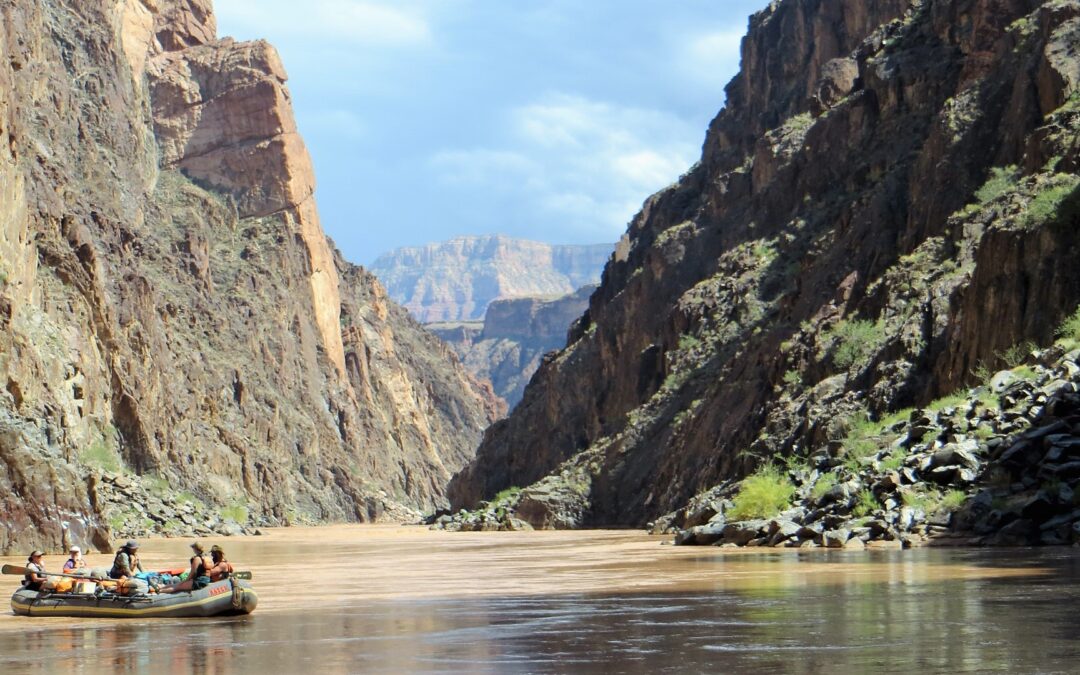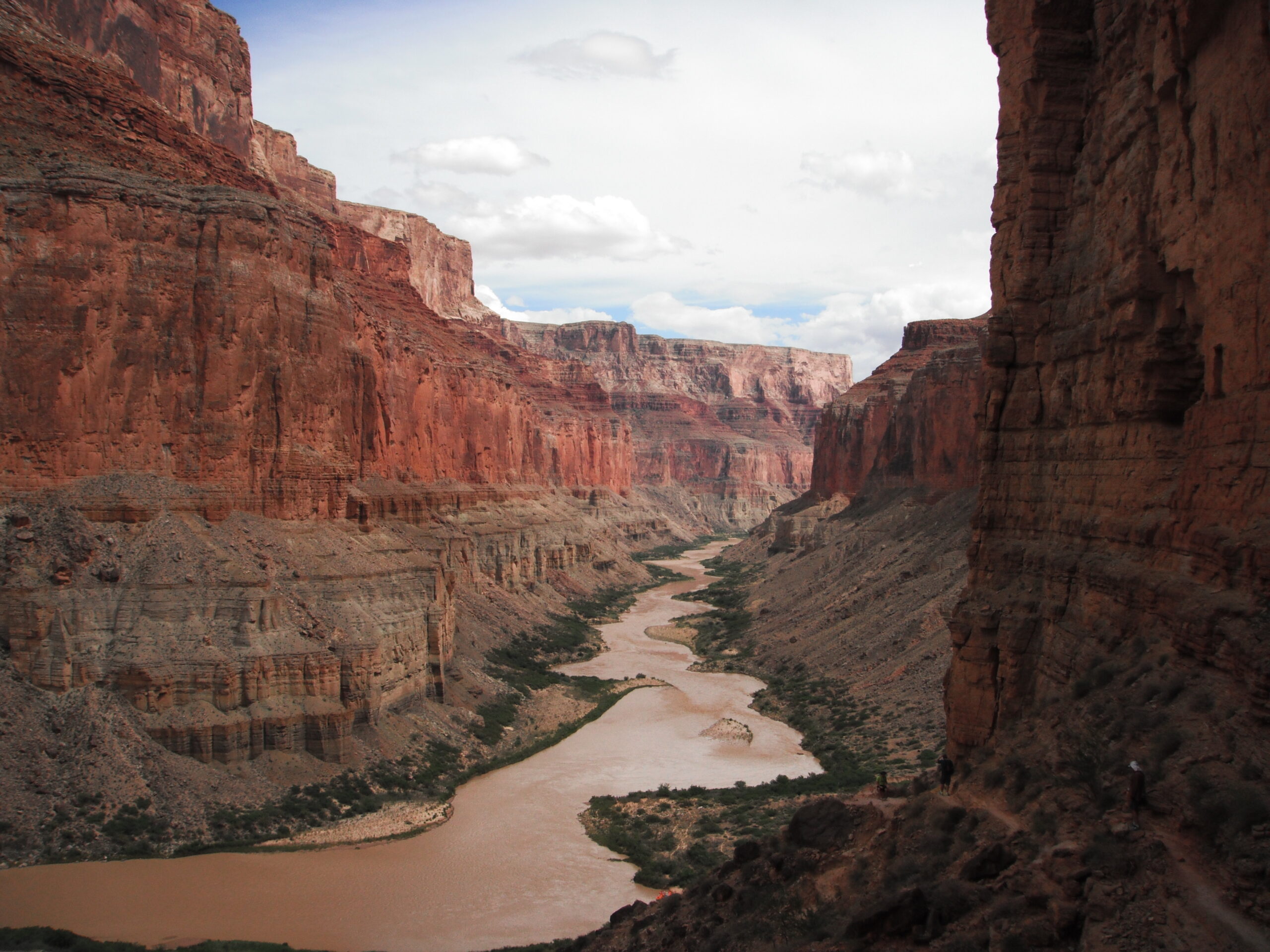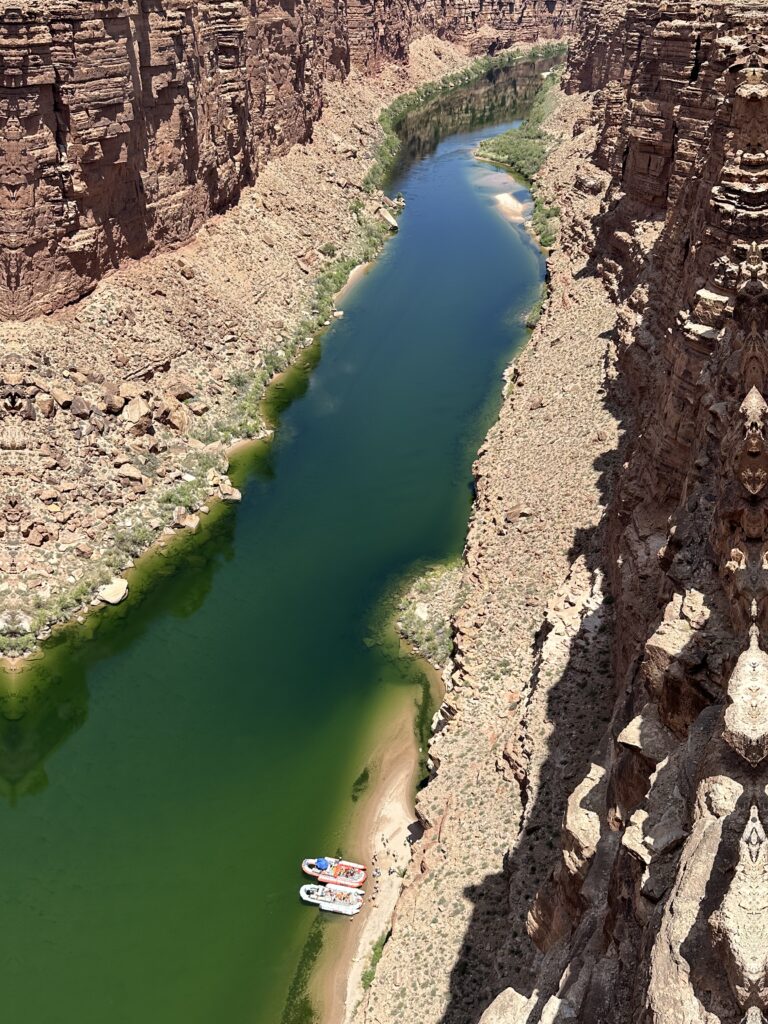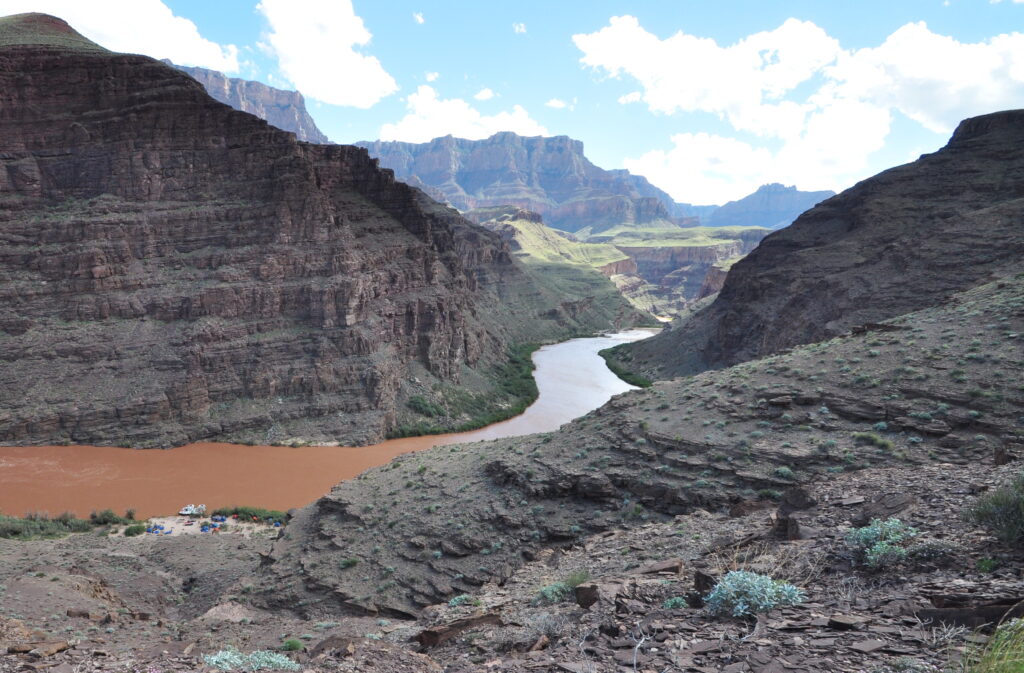Grand Canyon National Park recently announced that the park will be temporarily closing to overnight hotel stays starting on December...


 If you’ve looked at photos of the Colorado River, you might’ve noticed something curious—sometimes the water is a stunning blue-green, and other times it’s a rich reddish-brown. So, what causes this dramatic change in color, especially during the summer months? The short answer: rain!
If you’ve looked at photos of the Colorado River, you might’ve noticed something curious—sometimes the water is a stunning blue-green, and other times it’s a rich reddish-brown. So, what causes this dramatic change in color, especially during the summer months? The short answer: rain!
In the Southwest, summer brings what’s known as monsoon season, which typically starts around mid-July and can last into September. During this time, rainstorms become more frequent—and with them comes a higher chance of seeing a muddy, brown Colorado River.
When rain falls on the parched desert ground, the soil isn’t able to soak it up right away. These quick, intense storms often lead to flooding. While the large flash floods you see on the news do happen, more commonly, the rainwater rushes into nearby washes and creeks, which then flow into the Colorado River.
As this runoff travels across the dry landscape, it picks up fine, reddish silt—a dust-like type of soil finer than sand that coats much of the desert ground. That’s what gives the river its temporary, muddy appearance, which can last weeks. Storms that are miles and miles away from the river can change the color of the river without you ever seeing a drop of rain on your trip as long as the water from that storm somehow reaches the river.

Silt is a sediment made up of tiny, lightweight particles that stay suspended in fast-moving water of the river. Because it’s so fine, it doesn’t immediately settle at the bottom, which is why the river stays brown after a storm. However, if you were to scoop up a bucket of river water and leave it undisturbed for a few hours, the silt would settle, and the water would become clear again.
While the river’s typical blue-green color is breathtaking, its muddy, red-brown version is equally beautiful in its own wild way. During monsoon season, the river may stay brown for extended periods, as new rain continues to wash in silt from surrounding areas. In some places—like the confluences of the Little Colorado River or Havasu Creek with the main channel—you can see how the Colorado River changes color in real time!
Some visitors might feel uneasy about swimming in murky water, but don’t worry—it’s perfectly safe. The silt is so fine that you don’t even feel it while swimming in the river. And let’s be honest, a little dirt never hurt anyone! So, if you’re lucky enough to go on a river trip during monsoon season, embrace the chocolate-colored river!
Wondering which month is best for your travels? Whether the Colorado River is muddy or not is just one factor to consider. Check out our “Best Month to Raft Grand Canyon” blog to help make your decision!
If you’re rafting when there are monsoons in Grand Canyon, you might experience something incredible Imagine this: It’s your second day in the canyon and you are overwhelmed by how monumentally tall the walls around you seem to have gotten in such a short time. In the...
Bugs in Grand Canyon! With Halloween at the end of the week, it will be hard to go anywhere without being inundated by pumpkins, spider webs, costumes, and candy. In the spirit of the season, we thought you might like to know a bit about some of the more...
Grand Canyon Q&A: A Conversation with 7th Graders This past week, I got a call from our office asking if I’d be willing to talk to some seventh graders about the Grand Canyon. It was definitely an unusual request for me, but of course I said yes. When I...